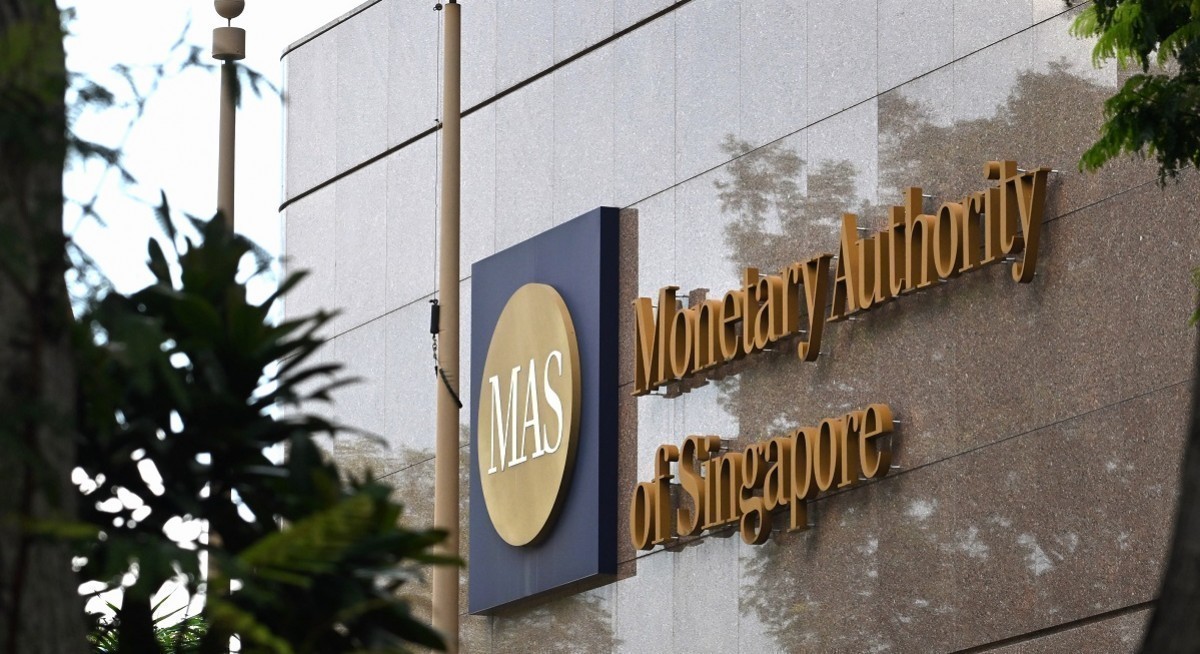Singapore’s central bank is expected to leave monetary policy unchanged this week as it weighs subdued inflation and the lingering threat of US trade measures against a resilient domestic growth outlook.
Sixteen out of 20 economists in a Bloomberg survey forecast the Monetary Authority of Singapore — which uses foreign exchange rather than interest rates — will maintain its settings Tuesday. Four respondents, including DBS Group Holdings and TD Securities, expect it to resume easing after leaving policy unchanged at its last review in July.
The MAS, which holds four policy reviews per year, had loosened settings in January and April to help support growth. Unlike most central banks, which use interest rates, Singapore seeks to maintain medium-term price stability by managing its dollar’s trade-weighted appreciation within a target band.
Singapore's Policy Tool | Currency basket appreciation eases
Tuesday’s decision comes as central banks across the region adopt divergent paths — with Indonesia and New Zealand deepening cuts to shore up growth amid rising global trade protectionism, while Thailand, Malaysia and Australia have opted to hold steady as they gauge the impact of earlier moves.
The US Federal Reserve, meanwhile, lowered borrowing costs last month for the first time since December.
“The central bank appears to be waiting for more definitive evidence of economic deterioration before making another move,” said Lloyd Chan, a strategist at MUFG Bank.
The trade spat between the US and China erupted again in recent days as Beijing imposed curbs on rare-earth mineral exports and Donald Trump said he would slap additional tariffs and restrictions on software sales to the Asian nation. Businesses are bracing themselves for disruptions from the escalation.
See also: Alleged scam leader’s Singapore aide seeks access to seized cash
Singapore will also release preliminary third-quarter GDP data on Tuesday, which will likely show economic growth slowed after a solid June quarter. At the same time, core inflation has cooled further.
Singapore’s domestic economy is showing signs of resilience — consumer spending rose at a faster-than-expected pace in August and manufacturing activity climbed to 56.4 in September, marking its eighth month of expansion. Private home prices jumped the most in three quarters, after a resurgence in sales of new apartments.
That, together with regional safe-haven demand, has boosted the Singapore dollar. While it’s up more than 5% against the dollar so far this year, it’s been relatively unchanged since the last MAS decision at the end of July.
Singapore’s core inflation slowed for a second straight month in August and authorities expect imported price increases to “remain moderate” in the near term. They see the core metric averaging 0.5% to 1.5% this year.
Singapore's Core Consumer Prices Rise at Slower Pace
One area of uncertainty is US tariffs, including sectoral levies on pharmaceuticals. Any drag from that could be cushioned by an upswing in the global semiconductor cycle, underpinned by strong AI-related investment demand, economists said.
To stay ahead of Singapore and the region’s corporate and economic trends, click here for Latest Section
According to the Economic Development Board, Singapore accounts for about 10% of global chip output and 20% of global semiconductor equipment production. The sector overall makes up roughly 6% of GDP, Khoon Goh, an economist at ANZ Banking Group, wrote in a note.
Given that backdrop, the MAS is unlikely to turn “too negative” on the outlook, he said. Goh expects the government to step in with a “comprehensive” fiscal package in next year’s budget including cash transfers to households and enhanced training and employment placement support.
“This means monetary policy can sit on the bench,” Goh said, “and only come on to the field if needed next year.”
Tools Explained | These are the three Monetary Authority of Singapore currency band tools




